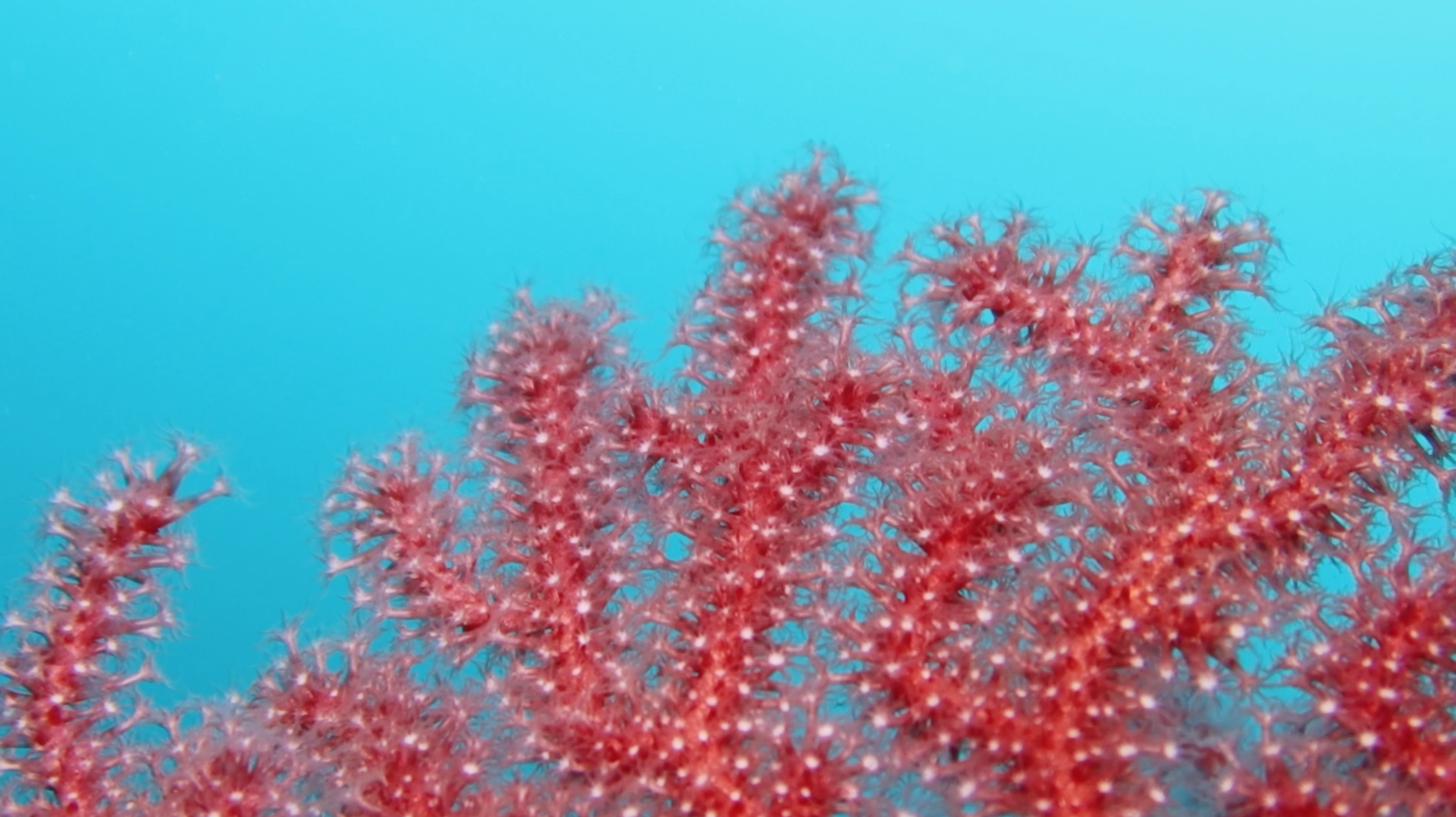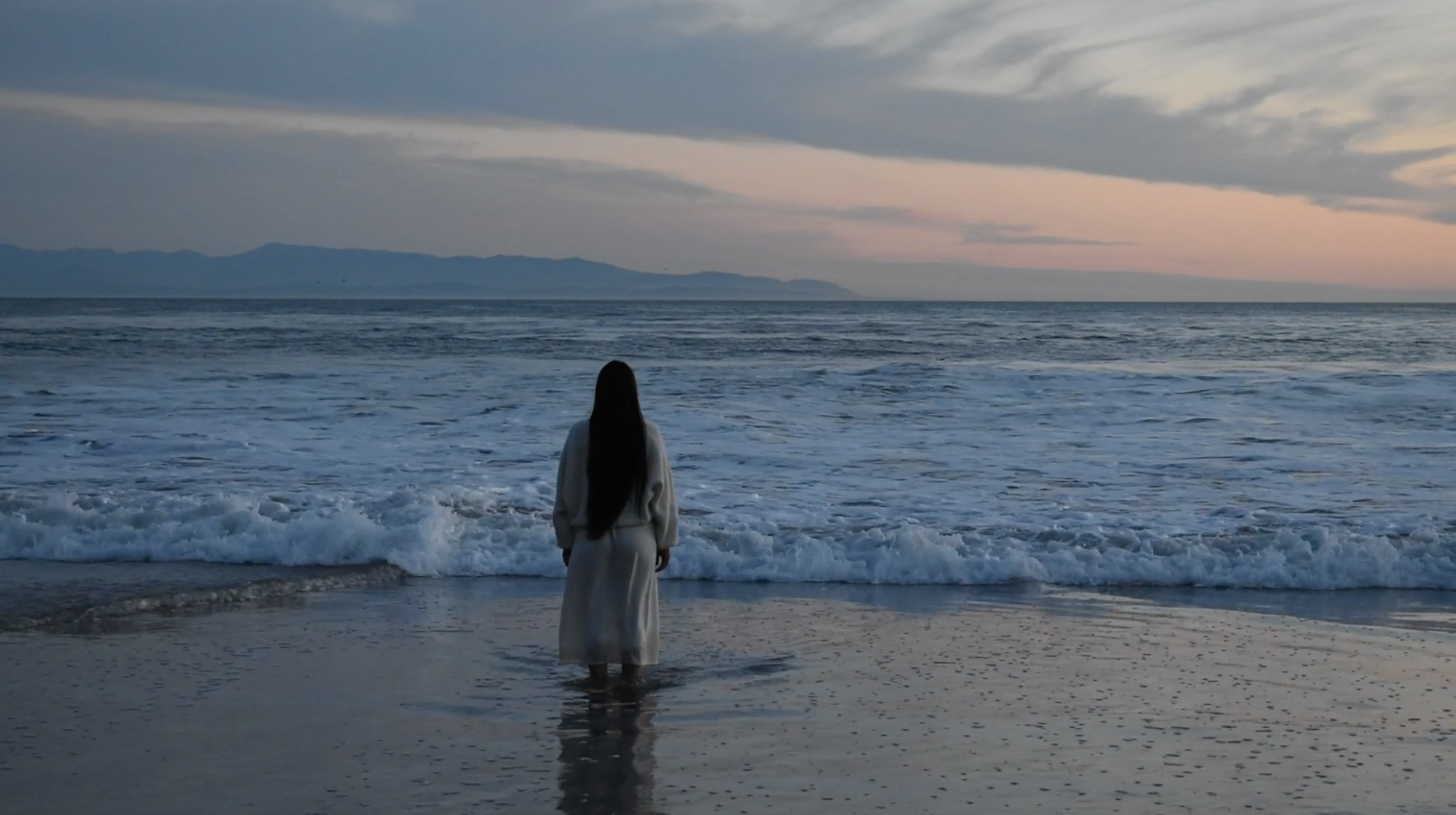
Medusa is an experimental film that offers a reinterpretation of the Greek myth of Medusa,
exploring its connection to the creation
of the Coral Gorgon in the Mediterranean.
This project was created in collaboration with several experts, including Thierry Perez, a CNRS scientist; David Gruber marine biologist from National Geographic; NOAA, Yadira Ramirez, an American Indian and Mexican actor; Jorge Bachmann, a sound designer; Elise Rigot, a designer; Martin Giraud for timelapse; Damien Golbin providing drone images and Stéphanie Araud for the film editor.
Medusa emerges as an ecofeminist creation, weaving a dialogue between a Native woman and an ancestral voice drawn from a Mediterranean legend. This piece presents a novel interpretation of the Greek myth of Gorgone Medusa, attributing her with the creation of coral in the sea. The narrative serves as a compelling exploration of the socio-ecological impact of living entities such as coral and women, viewed through the lens of ecofeminist principles.
«This legend was used to explain how coral in the sea was made. Perseus, after decapitating Medusa’s head, washed his hands, and to safeguard the head, it was laid down on some seaweed on the rocky shore of the Sea. The gorgon’s blood was spilled on to the seaweeds, and the mysterious power of the head metamorphosed the affected seaweeds into hard coral. » (Journal of Applied Phycology – 2020).
This film serves as an invitation to explore the often overlooked and misogynistic history embedded in the Greek myth of Medusa, a narrative that has endured through the centuries since antiquity. In this reinterpretation, I offer my own perspective on a tale from the ancient Mediterranean world, one that sought to explain the origin of coral in the sea. My vision posits that this legend can reshape our perception of women traditionally cast as witches, introducing an animist perspective. Medusa, as portrayed in this narrative, emerges as a victim—dominated and rejected by the world. Yet, the question lingers: Can she reclaim her position as an inspiring guide and creator of life? This reinterpretation carries the potential to revolutionize our beliefs about the role of women and the interconnectedness of all living things in our society. It prompts us to view our beliefs as a subversive process, challenging established norms.





Project Premise, Medusa’s Narrative by Kalie Granier
This text is an invitation to rediscover the cruel and misogynistic history of the Greek myth of Medusa, which has crossed the centuries since antiquity. Here, I deliver my own interpretation from a legend of the ancient Mediterranean world, which was used to explain how coral in the sea was created. I envision that this legend modifies our relationship with woman as witch while premising an animist reasoning. Medusa is a victim, dominated and rejected by the world. Nonetheless, will she take back her place as an inspiring guide, creator of lives? The meaning that we benefit from this perception is a revolution in our beliefs of women’s position and the living thing in our society. Our beliefs as a subversive process.
***
Far away, in this seemingly isolated island, a silhouette appears. A female body is immersed in water. Her snake hair lights up under the discreet sun at the end of this day. Her name is Medusa. In the sea, she once again feels connected to the world. This salty amniotic fluid that surrounds her, tells the story of life on Earth. Watching her belly round off from the rape she suffered from Poseidon, she wonders who, like her, still listens to the sea. She also wonders if her soul will take shape again through the birth of her child in a new cycle of life. The uterus as a path to rebirth.
Medusa is the daughter of sea deities. Yet, she is the only one of her two sisters to be mortal. They have been nicknamed the Gorgons or evil creatures since Athena transformed them into repulsive monsters. Swimming produces a sense of wellbeing in Medusa. She feels her body relax in contact with the still-warm autumn water. Water, this maze that communicates with these multitudes of underwater lives, connects her more intensely to the living. The snakes entwined on her head hiss with pleasure, which thrills her despite her fatigue. While sighing out loud, she remembers the beauty of her body and her dazzling hair before the goddess’s jealousy changed her fate forever. Life as an initiatory journey.
Banished, isolated, and without contact with the outside world, is the new reality of Medusa. Like all “witches,” she is rejected and feared by men and gods. Her spell, which was inflicted on her, doesn’t allow her to have the same vision of life anymore, and anyone who meets her gaze turns into stone. However, there is a lot of sweetness in her relationship with the living. Medusa takes great care of her snakes, who are also considered evil. Thanks to these lives on top of her head, now, she never feels alone. They participate in her connection to the world as social beings coming from this same planet. They have become her friends, her confidants, her openness and understanding towards non-human forms of life. However, it remains complex for Medusa to be in peace with the new character that she is forced to embody. The wilderness as an awe feeling of belonging.
Nonetheless, the tragedy continues to overwhelm Medusa. Since her metamorphosis, men no longer seek her to grab her beauty but to kill her. Perseus, one of the many sons of Zeus, a great hero of his time, wants to prove his bravery by decapitating the “snake monster.” The gods stand on his side and help him on his epic journey in search of Medusa. Hermes, Hades, and Athena provide him with the material he needs for his quest. Medusa once again will be alone and unar- med in the face of this new affront. After crossing the ocean, Perseus finally discovers the hiding place of Medusa, who was trying, despite her sad situation, to live free. With Hermes’ billhook, he decapitates with a single blow, what they call the monster. Cruelty as a wound for the next generations.
However, even when cut off, Medusa’s head continues to act. Her blood spills on the shore and slides gently through the water to the depths’ abyss. This return to the sea will transform reality forever. Medusa’s blood cells mix with powerful algae. An Alchemy operates under the power of the waves, and every marine element that meets Medusa’s blood turns into coral. This magical chemistry reincarnates the death of Medusa as a living superorganism. Coral will become the lar- gest known complex structure created by living organisms. These fascinating animal, plant, and mineral builders are shelters for many other species. They reduce coastal erosion, lessen natural disasters, and more. Medusa’s energy and soul swims through the ocean. Her flowing snake-hair and reptilian features are felt in the waves that move through waters, her laugh echoing in the wind. The woman’s spirit is still alive—strong, powerful, and victorious, dancing in the waves, beyond her coral offspring. Medusa’s revenge is finally recognized as beneficial, an intense plea- sure is felt on Earth. Death as an act of restoration.